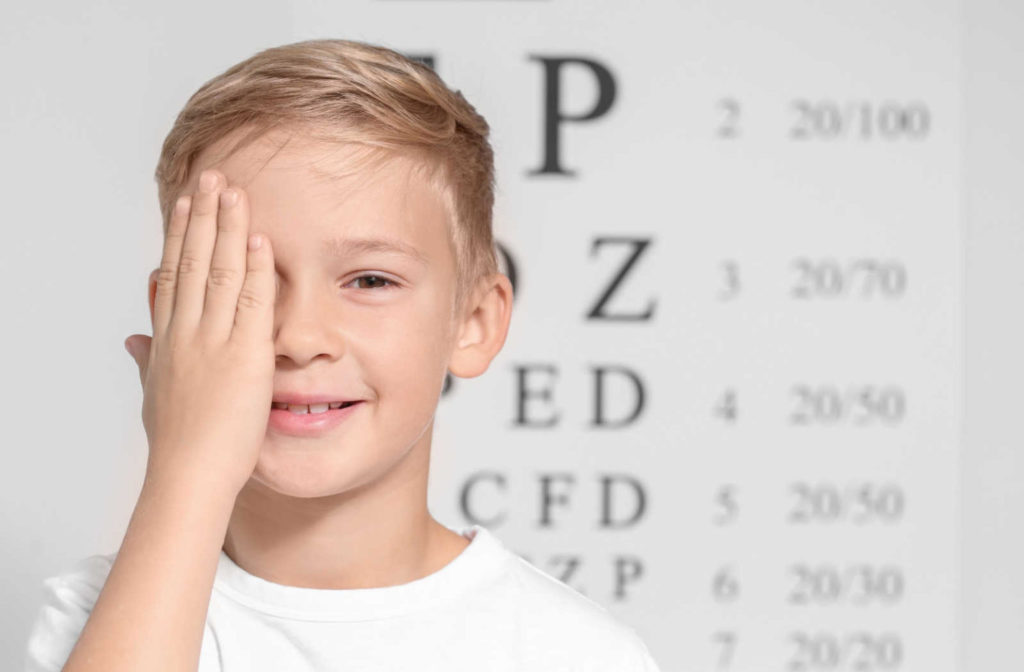Good vision is essential to a child’s development—physically, socially, and academically. From exploring their surroundings to learning in school, children rely on healthy eyes to interact with the world around them. Yet, vision problems in kids often go unnoticed, especially when children are too young to express their discomfort. Understanding early signs of vision issues, the impact of screen time, and the importance of regular eye exams can make a significant difference in protecting and preserving children’s eye health.
Why Children’s Eye Health Matters
Vision plays a critical role in nearly every aspect of childhood development. Poor eyesight can affect learning, behavior, motor skills, and even self-esteem. Many childhood eye issues are treatable if detected early—but delayed diagnosis can lead to long-term problems, including permanent vision loss.
Early Signs of Vision Problems in Children
Children may not realize or verbalize that their vision is impaired. That’s why it’s important for parents, caregivers, and teachers to recognize potential warning signs. Common indicators include:
- Squinting or closing one eye to see clearly
- Sitting too close to the TV or holding books very near
- Frequent eye rubbing, even when not tired
- Excessive tearing or dry eyes
- Redness or discharge from the eyes
- Frequent headaches or eye strain
- Difficulty concentrating or poor academic performance
- Avoiding reading or near work
- Complaints of double vision or blurry vision
- Tilting the head to see better
If you notice any of these signs, it’s essential to consult an eye care professional for a thorough evaluation.
The Impact of Screen Time on Children’s Eyes
In today’s digital age, children are spending more time than ever on screens—TVs, tablets, smartphones, and computers. While technology offers many learning opportunities, excessive screen time can negatively affect eye health.
Common Screen-Related Issues Include:
- Digital Eye Strain: Fatigue, blurred vision, and dry eyes from prolonged use
- Reduced Blinking: Leads to eye dryness and irritation
- Myopia (Nearsightedness): Increased screen time and reduced outdoor activity have been linked to a rise in childhood myopia
- Sleep Disruption: Blue light exposure affects melatonin production and sleep patterns
Tips to Reduce Screen Time Effects:
- Follow the 20-20-20 rule: Every 20 minutes, take a 20-second break and look at something 20 feet away
- Encourage frequent blinking to keep eyes moist
- Limit recreational screen time to 1–2 hours a day for children
- Ensure proper screen distance (18–24 inches) and height
- Promote more outdoor play—studies show it reduces the risk of myopia
The Importance of Regular Eye Exams for Children
Even if a child shows no symptoms, regular eye exams are crucial for detecting hidden issues that may impact vision and development.
Recommended Eye Exam Schedule:
- Infants (6–12 months): First comprehensive eye exam to rule out congenital issues
- Toddlers (1–3 years): Additional exams if needed or if problems are detected
- Preschoolers (3–5 years): Check for visual acuity, eye alignment, and depth perception
- School-age children (6+ years): Annual or biannual exams to monitor changes and screen for conditions like nearsightedness, farsightedness, and astigmatism
Note: School vision screenings are helpful but not a substitute for a comprehensive eye exam.
Common Eye Conditions in Children
- Amblyopia (Lazy Eye): One eye is weaker than the other and the brain favors the stronger eye. Early treatment is highly effective.
- Strabismus (Crossed Eyes): Misaligned eyes that can lead to double vision or amblyopia.
- Myopia, Hyperopia, and Astigmatism: Refractive errors affecting distance or near vision.
- Conjunctivitis (Pink Eye): Inflammation of the conjunctiva, often contagious but treatable.
- Blocked Tear Ducts: Common in infants and often resolves naturally or with simple treatment.
How Parents Can Support Eye Health at Home
- Provide a balanced diet rich in eye-friendly nutrients like vitamin A, C, E, lutein, and omega-3 fatty acids
- Encourage outdoor activities to promote visual development and reduce screen time
- Create a screen-friendly environment with good lighting and ergonomic setup
- Be a role model by practicing good eye habits yourself
- Ensure your child wears prescribed glasses or contacts if needed—and make it fun!
When to Seek Professional Help
If your child is showing any of the signs listed earlier or if you have concerns about their visual development, don’t wait. Early detection and treatment can prevent complications and help your child thrive academically and socially.
FAQs About Children’s Eye Health
1. At what age should a child have their first eye exam?
Ideally between 6–12 months, with follow-ups at age 3 and before starting school.
2. Can screen time cause permanent damage to a child’s eyes?
While screen time can cause temporary discomfort and may contribute to myopia, it typically does not cause permanent damage if managed properly.
3. How can I tell if my child has vision problems if they don’t complain?
Watch for signs like squinting, sitting too close to the TV, or avoiding reading.
4. Is blue light from screens harmful to kids?
Blue light can disrupt sleep but isn’t proven to cause permanent eye damage. Blue light filters can help reduce its impact.
5. Are school vision screenings enough?
No. They are basic and may miss subtle or complex issues. A comprehensive eye exam is essential.
6. Should my child wear sunglasses?
Yes! UV protection is important, even for young children, to prevent long-term eye damage.
7. Can children wear contact lenses?
Yes, if they’re responsible and mature enough. Eye care professionals can help determine readiness.
8. What’s the best way to encourage outdoor play for better eye health?
Set regular screen-free playtimes and engage in family outdoor activities to build healthy habits.
Final Thoughts
Protecting your child’s vision begins with awareness and proactive care. By recognizing the early signs of eye problems, managing screen time wisely, and prioritizing regular eye exams, you can help ensure that your child enjoys clear vision and a bright future. Good eye health is a gift that lasts a lifetime—and it starts now.










